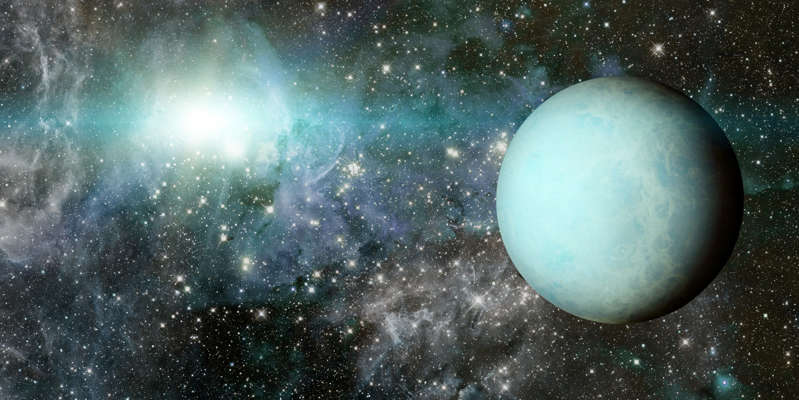
Astronomers explain the unusual composition of the atmospheres of Uranus and Neptune
Scientists from the Lagrange laboratory in Nice have found an explanation for the strange composition of the atmospheres of Uranus and Neptune. Earlier it became known that these gas planets contain very little ammonia compared to other planets in the solar system, reports Phys.org.
At the same time, they contain in abundance other components of the primary gas-air cloud, from which the objects of the system, for example, methane, were formed. Astronomers have long been unable to explain this discrepancy.
The authors of the new scientific work offered their solution to the riddle. They noted that either the planets originated in a special area, poor in ammonia, or this gas is contained in them in a special form.
“The Juno spacecraft has shown that ammonia is abundant on Jupiter, but generally much deeper than expected,” they noted.
It turned out that ammonia on Jupiter is enclosed in ice spheres. These spheres arise during storms due to the ability of ammonia to liquefy water ice crystals even at very low temperatures, around -90 degrees Celsius. The experimental model has shown that the size of such “hailstones” can reach a kilogram.
Sinking down, the spheres carry ammonia into the deep layers of the atmosphere, where it is trapped under the base of the clouds. Scientists have suggested that the same processes are taking place on Uranus and Neptune.
The study showed that on these planets, the formation of ammonia hailstones can be even more active. Consequently, stocks of ammonia are stored at great depths, so far inaccessible to devices. But to test this theory, you need to send a research apparatus to the gas giants that could take samples of the atmosphere.
Scientists have previously stated that the Ninth Planet may be in the solar system. Its orbit has even been mapped.

